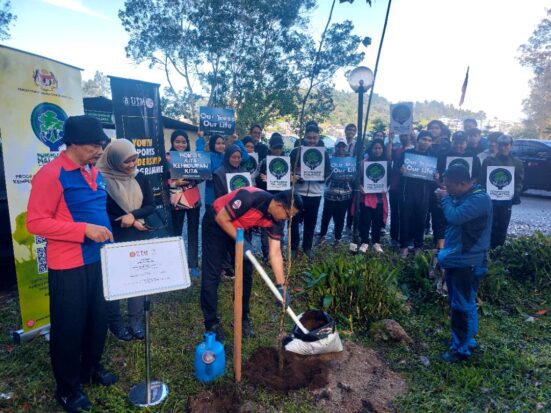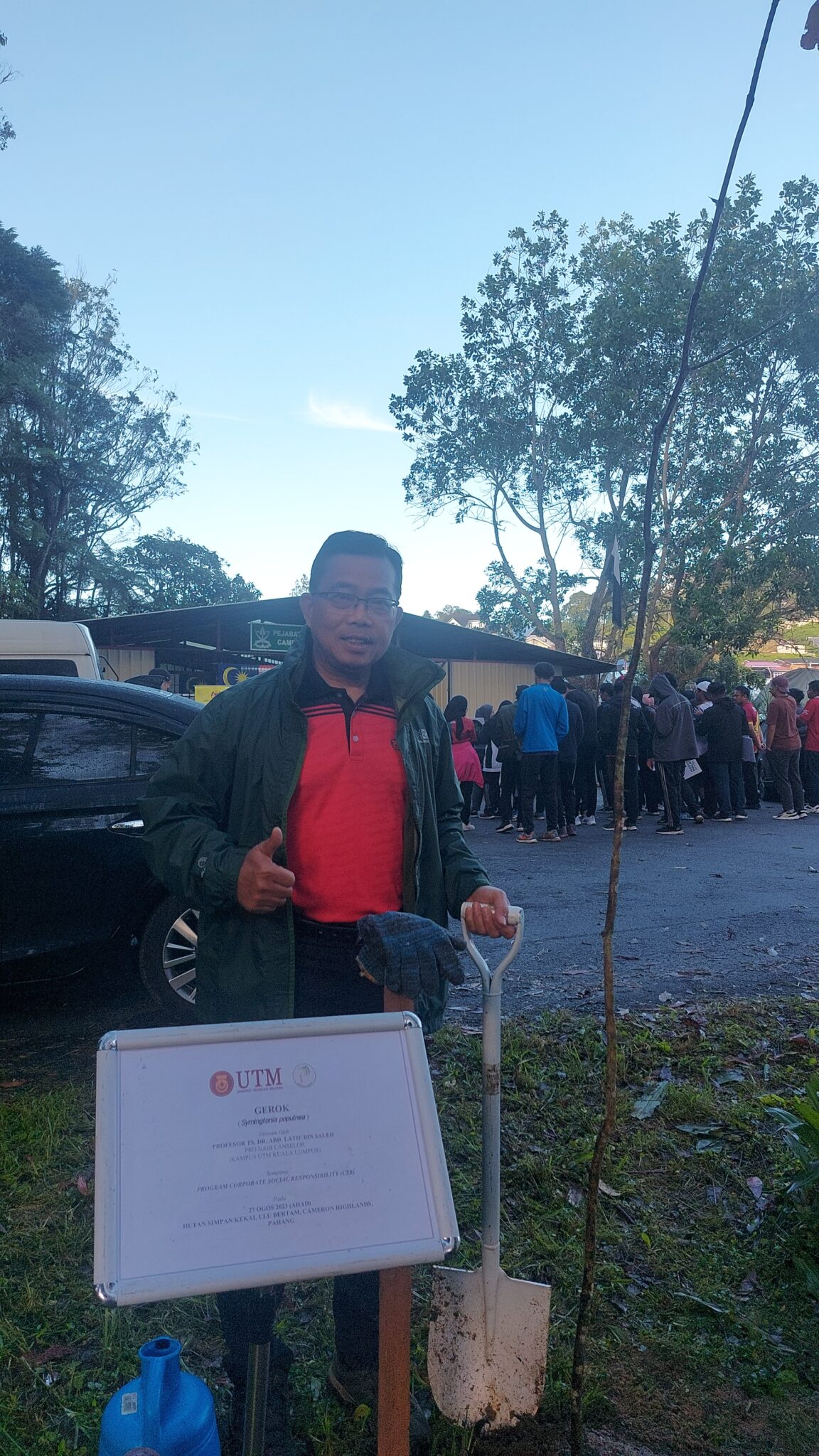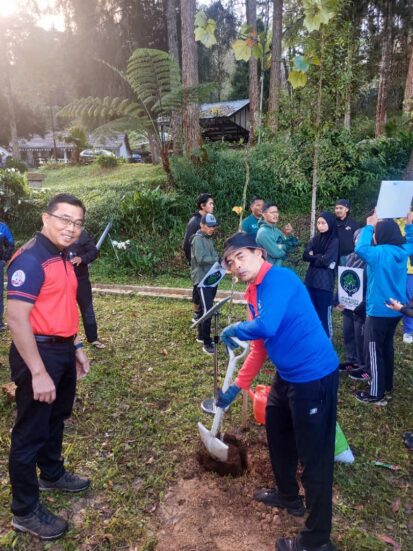Cameron Highlands – On 27 August 2023, the Malaysian Greening Program launched the 100 Million Tree Planting Campaign jointly organized by the Pahang State Forestry Department (JPNP) and Universiti Teknologi Malaysia (UTM). The campaign’s main objective is to encourage people to plant more trees throughout the country to help offset the effects of climate change and strengthen environmental diversity. A total of 35 students from UTM participated in the Environmental Conservation Awareness Program, organized by the Sports Excellence Center and HEP Office, together with JPNP.
As part of Malaysia’s efforts to protect the environment and contribute to international climate change goals, a program was initiated to plant a total of 30 saplings from Gerok (Symingtonia populnea) and Damar Minyak (Agathis borneensis) species in Ulu Bertam Hutan Simpan Kekal (HSK) Compartment 5, located in the Cameron Highlands District. JPNP and UTM have partnered to raise awareness and engage local communities in environmental conservation efforts. JPNP is always open to invitations and cooperation from all parties to jointly green Pahang State and the Cameron Highlands District.
During the inauguration of the program, Professor Ts. Dr. Abd. Latif Bin Saleh, Pro-Vice Chancellor of UTM KL, and Professor Ir. Ts. Dr. Aminuddin Bin Haji Abu, Director of HEP UTM KL, planted Gerok saplings as a gimmick. UTMKL students, the Forestry Officers, and UTM staff planted 28 species of Damar Minyak saplings in the Ulu Bertam HSK Kompatmen 5 area.
Professor Ts. Dr. Abd. Latif Bin Saleh mentioned that this campaign is an excellent opportunity for students and the local community to participate in environmental protection and learn the importance of greening in the fight against climate change. He also emphasized that mature trees can absorb a significant amount of 22 kilograms of CO2 per year.
Trees are natural carbon sinks. They act as guardians of the environment by absorbing carbon dioxide during photosynthesis. Trees convert carbon dioxide into oxygen through this process and store the carbon in their biomass and soil. This carbon sequestration capacity makes trees an invaluable tool in reducing atmospheric carbon dioxide levels. Research indicates that a single mature tree can absorb up to 22 kilograms of carbon dioxide annually. Therefore, planting trees is an efficient and effective means of carbon offset.
Besides their carbon sequestration capabilities, trees play a pivotal role in maintaining biodiversity and preserving ecosystems. Forests are home to countless species of plants, animals, and microorganisms. By planting trees, we combat climate change and provide habitat and sustenance for various forms of life. This interconnected web of biodiversity contributes to ecosystem resilience, ensuring that our planet remains healthy and adaptable in the face of environmental challenges.
Trees also have a remarkable influence on local and global climates. Through a process called transpiration, trees release water vapor into the atmosphere. This water vapor then contributes to cloud formation and precipitation. This process has a cooling effect on the local climate and helps regulate temperature and humidity. On a larger scale, forests influence global climate patterns by affecting atmospheric circulation and influencing weather systems. Therefore, tree planting not only aids in carbon offset but also actively contributes to climate regulation.
Tree planting initiatives have the potential to foster sustainable development and community involvement. When properly planned and executed, these initiatives can create jobs, enhance local economies, and empower communities. Engaging local populations in tree-planting projects improves the environment and strengthens social bonds. It instils a sense of pride and ownership in the local ecosystem.
In the battle against climate change, tree planting stands out as a powerful and multifaceted strategy for carbon offset. Its ability to sequester carbon, support biodiversity, regulate climate, and promote sustainable development underscores its importance in creating a more resilient and sustainable future. As individuals, communities, and nations, we must embrace tree-planting initiatives. We need to harness the potential of nature to heal the environment and mitigate the impact of carbon emissions. Through concerted efforts and dedication, tree planting can emerge as a cornerstone of our collective journey towards a greener and more harmonious planet.


Prof. Ts. Dr. Abd Latif Saleh and Prof. Ir. Dr. Aminuddin Abu planting Gerok saplings at Ulu Bertam Cameron Highlands Pahang
Shamsul Sarip, PhD, P. Eng MIEM, Assoc. Professor
Deputy Director
UTM Campus Sustainability (UTMCS)



